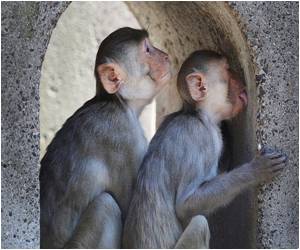Everything's in the task. In other words, the monkey needs to know where his hand is, what direction it is headed and where he eventually wants to to go.

To plan the movement, says Daniel Moran, PhD, associate professor of biomedical engineering in the School of Engineering & Applied Science and of neurobiology in the School of Medicine at Washington University in St. Louis, the monkey needs three pieces of information: current hand and target position and the velocity vector that the hand will follow.
In other words, the monkey needs to know where his hand is, what direction it is headed and where he eventually wants to to go.
A variation of the center-out task with multiple starting positions allows the neural coding for position to be separated from the neural coding for velocity.
By themselves, however, the straight-path, unimpeded reaches in this task don't let the neural coding for velocity to be distinguished from the neural coding for target position, because these two parameters are always correlated. The initial velocity of the hand and the target are always in the same direction.
To solve this problem and isolate target position from movement direction, doctoral student Thomas Pearce designed a novel obstacle-avoidance task to be done in addition to the center-out task.
Advertisement
Source-Eurekalert








